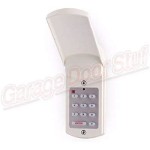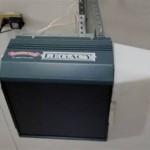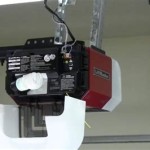How to Organize Tools in the Garage: A Comprehensive Guide
The garage, often intended as a space for vehicle storage and home maintenance tasks, frequently transforms into a chaotic repository for tools, equipment, and miscellaneous items. This disorganization can lead to frustration, wasted time searching for necessary tools, and even potential safety hazards. Implementing a structured approach to tool organization within the garage can significantly improve efficiency, accessibility, and the overall functionality of the space.
Effective garage tool organization involves a multifaceted strategy that encompasses planning, sorting, storage solutions, and ongoing maintenance. A systematic approach, tailored to individual needs and the available space, is crucial for achieving a sustainable and organized garage environment.
1. Assessment and Planning: Setting the Foundation for Organization
Before implementing any organizational system, a comprehensive assessment of the current state of the garage is necessary. This involves taking inventory of all tools, equipment, and other items stored within the space. Categorizing these items based on their function, frequency of use, and size is an essential first step. This categorization allows for informed decisions regarding appropriate storage solutions and their placement within the garage.
Consider the frequency with which each tool is used. Tools used daily or weekly should be readily accessible, while those used less frequently can be stored in less convenient locations. Similarly, tools used together for specific projects should be stored in close proximity to one another. This approach minimizes unnecessary movement and optimizes the workflow during projects.
Evaluate the available space within the garage. Measure the wall dimensions, ceiling height, and existing storage areas. This information is crucial for selecting appropriate storage solutions that maximize space utilization without obstructing walkways or vehicle access. Consider vertical space as a valuable resource for storage, particularly for items that are not frequently used.
Develop a detailed plan outlining the desired layout and storage solutions. This plan should consider the specific needs of the user, the available space, and the budget for organizational materials. A well-defined plan serves as a roadmap for the organization process and ensures that the final result meets the intended goals.
2. Sorting and Decluttering: Eliminating Unnecessary Items
Decluttering is a critical step in the organization process. It involves identifying and removing items that are no longer needed, broken, or duplicated. This process reduces the overall volume of items to be organized, simplifying the subsequent storage efforts. Consider donating or selling unwanted items in usable condition, or disposing of them responsibly.
Be ruthless in the decluttering process. Items that have not been used in several years are likely unnecessary and should be considered for removal. Avoid sentimental attachments to items that are simply taking up valuable space. The goal is to create a functional and efficient workspace, not a storage unit for unused belongings.
When sorting tools, check for duplicates. Often, multiple versions of the same tool are accumulated over time. Select the best quality or most frequently used version and consider donating or selling the others. Similarly, identify broken or damaged tools that are beyond repair. Disposing of these items frees up space and eliminates clutter.
Properly dispose of hazardous materials, such as old paint, chemicals, and batteries. Contact local waste management services for information on proper disposal methods. Storing hazardous materials improperly can pose significant safety risks.
3. Implementing Storage Solutions: Maximizing Accessibility and Efficiency
Selecting appropriate storage solutions is essential for creating an organized and functional garage. A variety of storage options are available, each with its own advantages and disadvantages. The choice of storage solutions should be based on the specific needs of the user, the types of tools being stored, and the available space.
Wall-mounted storage systems are highly effective for maximizing space utilization. Pegboards, for example, are versatile and can be configured to hold a wide variety of tools, from screwdrivers and wrenches to hammers and pliers. Hooks, shelves, and specialized tool holders can be attached to the pegboard to create a customized storage system.
Cabinets and shelving units provide enclosed storage for larger tools and equipment, as well as for items that need to be protected from dust and moisture. Cabinets with drawers are particularly useful for storing small parts and fasteners. Consider the weight capacity of shelves and cabinets to ensure they can safely support the items being stored.
Overhead storage racks are ideal for storing seasonal items, such as holiday decorations and lawn furniture. These racks utilize the often-unused space near the ceiling, freeing up valuable floor space. Ensure that overhead storage racks are securely installed and can safely support the weight of the items being stored.
Tool chests and rolling carts provide mobile storage solutions for mechanics and other individuals who frequently move tools around the garage. These units offer a convenient way to keep essential tools within easy reach during projects. Choose a tool chest or cart with sufficient storage capacity and sturdy construction.
Specialized storage solutions are available for specific types of tools and equipment. These include lawnmower lifts, bicycle racks, and ladder hooks. Using these specialized solutions can help to optimize space utilization and prevent damage to tools and equipment.
When installing storage solutions, consider leaving ample space for movement and access. Avoid cluttering walkways or obstructing access to vehicles. Ensure that storage solutions are securely mounted to the wall or ceiling to prevent accidents.
4. Labeling and Categorization: Ensuring Easy Retrieval
Labeling storage containers and organizing tools by category is crucial for maintaining an organized garage. Clear and consistent labeling makes it easy to locate specific tools and equipment, saving time and frustration. Develop a labeling system that is easy to understand and use.
Use a label maker to create durable and professional-looking labels. Labels should clearly identify the contents of containers and the location of specific tools. Consider using color-coded labels to further categorize items by function or type. For example, electrical tools could be labeled with red labels, while plumbing tools could be labeled with blue labels.
Organize tools within storage containers and on shelves according to their function or type. Group similar tools together to facilitate easy retrieval. For example, all screwdrivers could be stored together in a single drawer or on a dedicated shelf.
Create a visual inventory of tools and their locations. This inventory can be in the form of a spreadsheet, a printed list, or even a whiteboard. The visual inventory serves as a quick reference guide for locating specific tools and ensures that they are returned to their proper place after use.
5. Maintenance and Upkeep: Sustaining Organization
Maintaining an organized garage is an ongoing process that requires regular effort. It is essential to establish a routine for cleaning and organizing the garage to prevent it from reverting to its previous chaotic state. Regular maintenance ensures that the organization system remains effective and sustainable.
Schedule regular cleaning and decluttering sessions. This could be done weekly, monthly, or quarterly, depending on the frequency of use and the amount of activity in the garage. During these sessions, remove any accumulated clutter, sweep or vacuum the floor, and wipe down surfaces.
Enforce a "put it back" policy. Train all users of the garage to return tools and equipment to their designated locations immediately after use. This simple practice can prevent clutter from accumulating and ensures that tools are readily available when needed.
Periodically reassess the organization system. As needs change and new tools are acquired, the organization system may need to be adjusted. Regularly evaluate the effectiveness of the system and make necessary modifications to ensure it continues to meet the users' needs.
Repair or replace damaged storage solutions promptly. Broken shelves, damaged hooks, or malfunctioning cabinets can compromise the organization system and create safety hazards. Addressing these issues promptly prevents further damage and maintains the integrity of the system.
By implementing these strategies and maintaining a consistent effort, the garage can be transformed from a cluttered storage space into a functional and organized workspace. An organized garage not only improves efficiency and accessibility but also enhances the overall safety and enjoyment of the space.

23 Tips Tricks Ideas For Organizing Your Garage Extra Space Storage

23 Tips Tricks Ideas For Organizing Your Garage Extra Space Storage

46 Garage Organizing Ideas You Can Diy Family Handyman

12 Garage Storage Ideas How To Organize A

How To Organize Tools On A Pegboard 15 Brilliant Ideas

12 Easy Organization Tips For Any Workspace

Diy Garage Storage Outlook Home Inspections Llc

5 Tool Storage Ideas To Organize Your Workspace

10 Best Ways To Organize Tools Lean 5s Products
How To Organize Tools On A Pegboard 15 Brilliant Ideas
See Also








